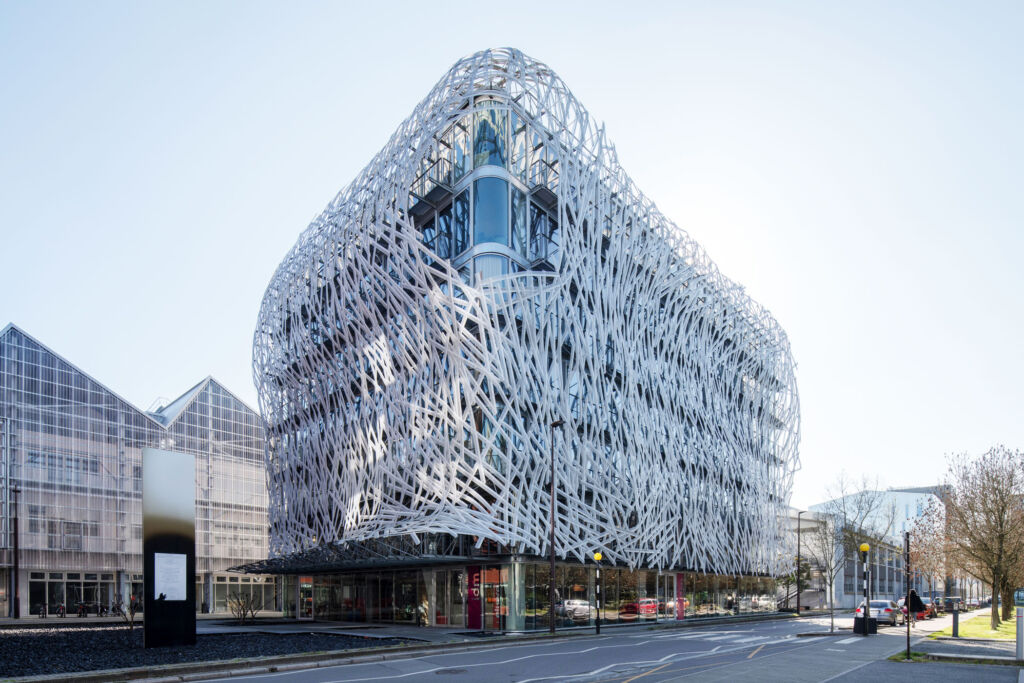
By venturing off the beaten track and heading to unsung places, there’s no doubt you’ll get a sense of adventure and excitement. Not only can you avoid crowds of tourists, but you also get the opportunity to immerse in authentic culture. So, if you’re tired of the typical tourist destinations, cast your eye on Nantes.
Forget the ‘yellow brick road’. It’s all about the ‘green line’ in Nantes. Confused? Allow me to explain. Nantes, once a thriving port, fell on its knees with the closure of the shipyards in 1987. But refusing to fall into despair, the town decided to reinvent itself and turned to art and nature to re-emerge as a destination full of culture.
Work began in earnest in 2007 with the launch of the ‘Parcours Estuaire’ (Estuary Trail) art project. Unfurling on both sides of the Loire River (France’s largest river) stretching 60 km from Nantes to Saint-Nazaire, artworks of various shapes and sizes steadily began to appear along the estuary landscape. Today, there are 33.
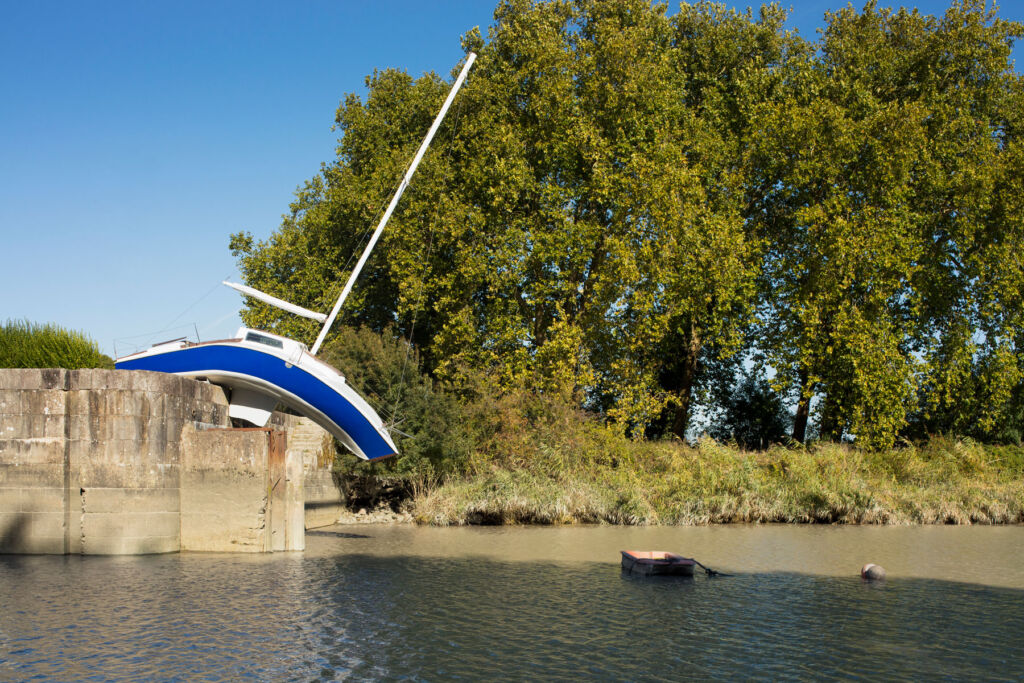 Erwin Wurm, Misconceivable, Canal de la Martinière, Le Pellerin, création pérenne Estuaire 2007 © Philippe Piron.
Erwin Wurm, Misconceivable, Canal de la Martinière, Le Pellerin, création pérenne Estuaire 2007 © Philippe Piron.
The brainchild of Jean Blaise, director of the Le Voyage à Nantes contemporary art festival, today the trail has materialised in a collection of more than 120 permanent artworks that can be found from the heart of downtown out to the Ocean, along the Estuary and in Nantes’ vineyards by some of the most distinguished artists on the international scene.
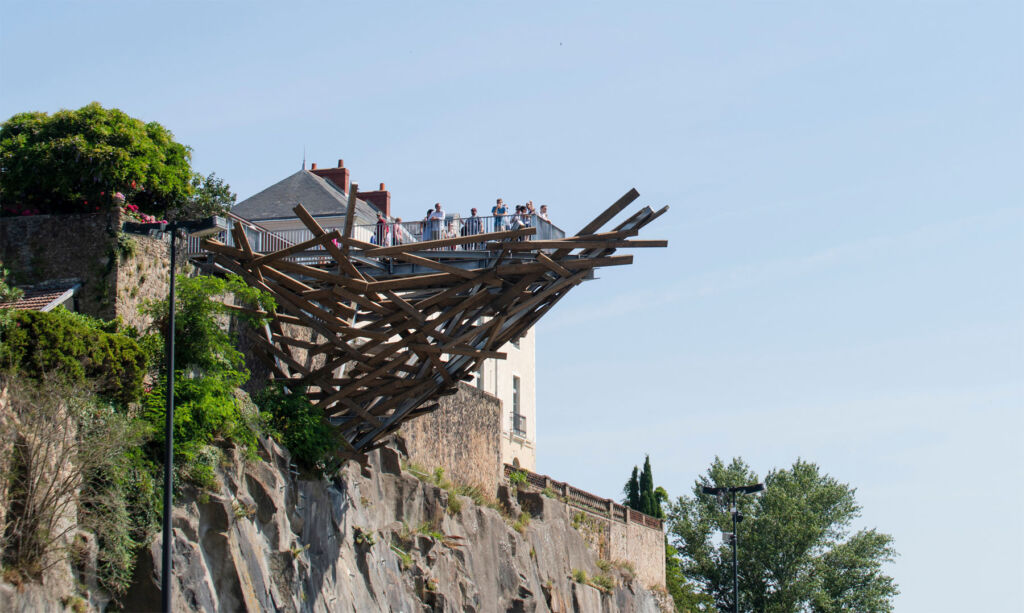 Tadashi Kawamata, Belvedere De L’Hermitage, Le Voyage À Nantes 2019 ©Martin Argyroglo.
Tadashi Kawamata, Belvedere De L’Hermitage, Le Voyage À Nantes 2019 ©Martin Argyroglo.
And It’s getting bigger and better each year, as Le Voyages à Nantes kicks up dust among artists, architects, landscape designers, and other urban poets to come up with ideas for the annual summer showcase.
Around sixty ephemeral works are selected. For two whole months, art infuses the town along the 20 km green line trail. Some become permanent, while others stay temporarily to make way for new ones the following year.
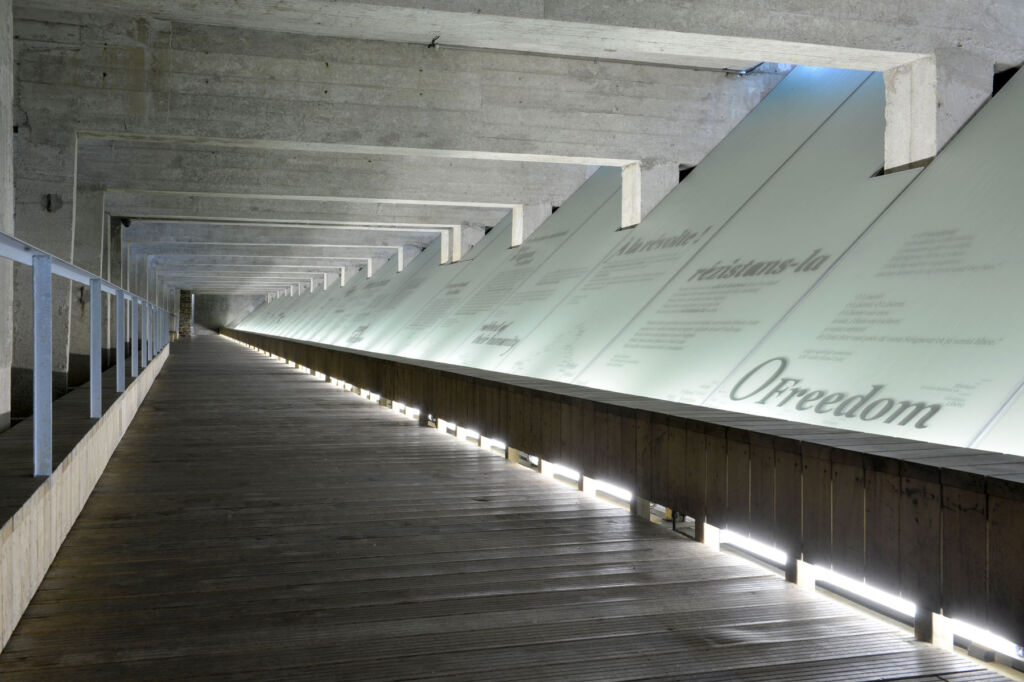 Parcours méditatif. Le Mémorial de l’abolition de l’esclavage. Nantes © Jean-Dominique Billaud – Nautilus..
Parcours méditatif. Le Mémorial de l’abolition de l’esclavage. Nantes © Jean-Dominique Billaud – Nautilus..
The colossal but incredibly fascinating installations are akin to ‘scattered monuments’ and can be marvelled at by foot, bike or boat. The Nantes Tourist Information, named after Le Voyage à Nantes, has a full list of those who can best advise on how to navigate around the entire collection.
Back to the green line, the artworks along the first third of the Estuary Trail can be found in Nantes by following the trail.
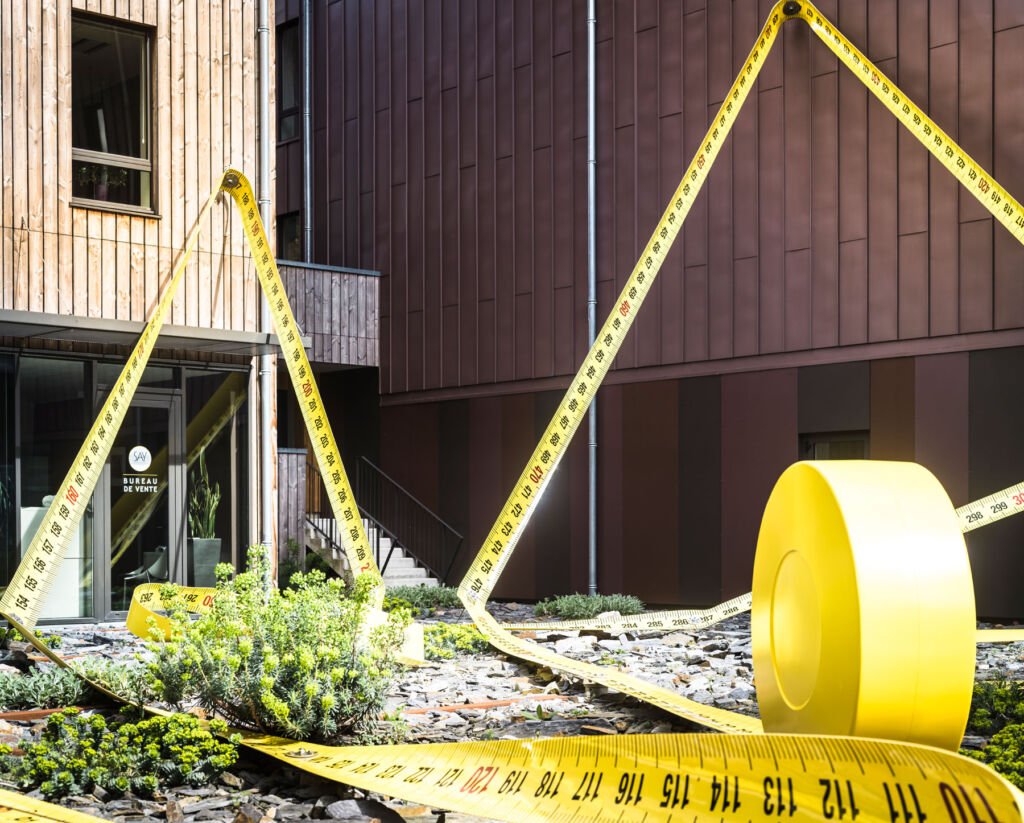
There’s no need for Google Maps as most of the installations in this section can be found on the Île de Nantes, an island in the centre of Nantes flanked by two arms of the Loire River. The playful green line entices art connoisseurs and newcomers alike to continue to discover more.
Les Anneaux (The Rings) by Daniel Buren and Patrick Bouchain is a series of large luminous rings bordering the quayside on the west side of the island. They are better appreciated in the darkness of night when lit up in their glory. You can walk right up beside them or view them from the opposite side of the Belvedere de’ l’Hermitage.
Another part of the art trail is by artist Tadashi Kawamata, whose work is made entirely of wood and opens onto a long, narrow, slightly sloped footbridge. We were afforded an unobstructed view of the city and river Loire.
Heading towards Saint Nazaire
Enticing us to continue our journey of artistic discovery in the direction of Saint-Nazaire, we ended up at La Maison dans la Loire.
The house, the creation of Jean-Luc Courcoult, at the edge of the village is located between the river and the countryside. Stuck in the silt with its shutters closed, it tilts slightly as the current gets the better of it.
Austrian artist Ewin Wurm’s Misconceivable, an abandoned yacht, also tilts onto its side, tipping over by the Canal de la Martinière. Inaugurated in 1892, the canal was built to reach Nantes’ port more easily. Today, it’s used for hydraulic regulation and, together with the yacht, attracts boat lovers in droves.
The yacht is a prime example of an artwork that was originally installed temporarily, but the locals were enamoured by it so much that they insisted it become permanent.
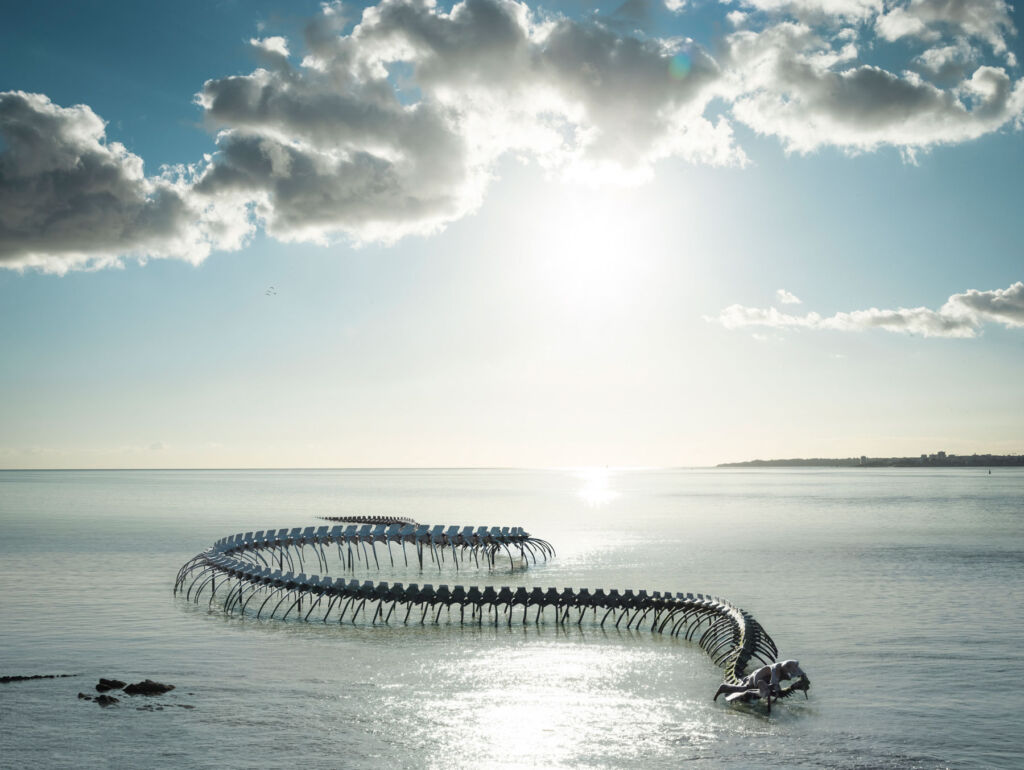
The Ocean Serpent, masterminded by Huang Yong Ping, is another wonder which draws in beach lovers. Located at the border where the river meets the Ocean, the gigantic skeleton of a sea serpent surges out of the sea, giving the illusion it crossed the seven seas before washing up on this beach. The shape of its vertebrae echoes the curve of the Saint-Nazaire bridge.
Saint-Nazaire is a city by the sea worth visiting in its own right. Ask the locals the way to the beach, and they’ll probably ask, ‘Which one ?’ The town boasts 20 beaches.
It’s also home to the most southerly section of the GR34 coastal path. Lining the coast of Brittany got more than 2000 km; the trail was created in 1664 so customs officers could spot smugglers.
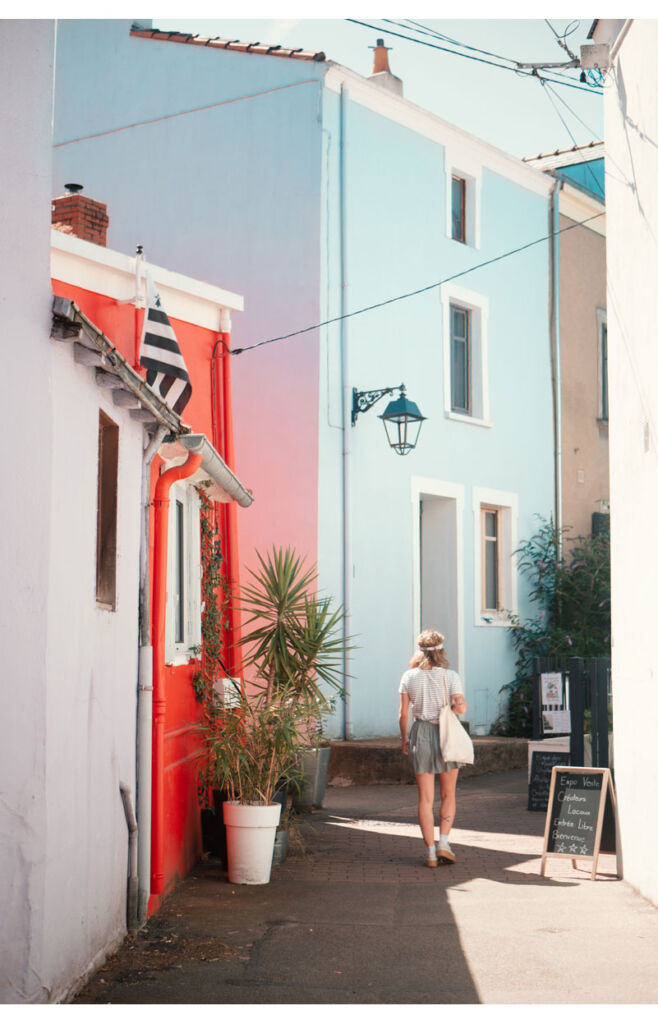 Architecture and History of Nantes
Architecture and History of Nantes
While playfully tracing the green line following artworks, Nantes also draws visitors’ attention to look back at its heritage.
Sitting alongside the art in random streets are plenty of elements of Nantes’ architectural heritage, including The Chateau des Ducs de Bretagne. Housed inside is the Nantes history museum, which paints a portrait of the city from its origins to the current metropolis, including the Atlantic Slave Trade.
The Le Memorial de l’abolition de l’esclavage is devoted to the abolition of the slave trade. It’s a solemn reminder of Nantes’ history as the most active slave-trading port in 18th-century France. It pays a poignant tribute to those who struggled and continue to struggle against world slavery.
The memorial was designed by Krzysztof Wodiczko and architect Julian Bonder, who wanted “a metaphorical and emotional evocation of the struggle, mainly historical but still current, for the abolition of slavery”.
Opened in 2012 on the riverside Quai de la Fosse, the very spot where numerous slave ships from Nantes set sail. The underground route takes visitors on a moving, emotional journey of the slave trade via historical and geographical keys, figures, maps, and chronology to underline the extent of the history.
The memorial remains one of the largest of its kind in the world and the only one in Europe dedicated to the Atlantic Slave Trade, slavery and its abolition.
With so much to see, do and experience in Nantes, it’s worth investing in the Pass Nantes’. The city pass (24, 48, 72 hours and seven days) offers free access to all museums and their exhibitions alongside travel. While the focus of new artwork is in the summer months, Le Voyage a Nantes has been busing itself with the wintertime voyage.
Continuing the dialogue of art, this voyage invites artists to spark up end-of-year traditions throughout December. So there really is something new to see all year round.
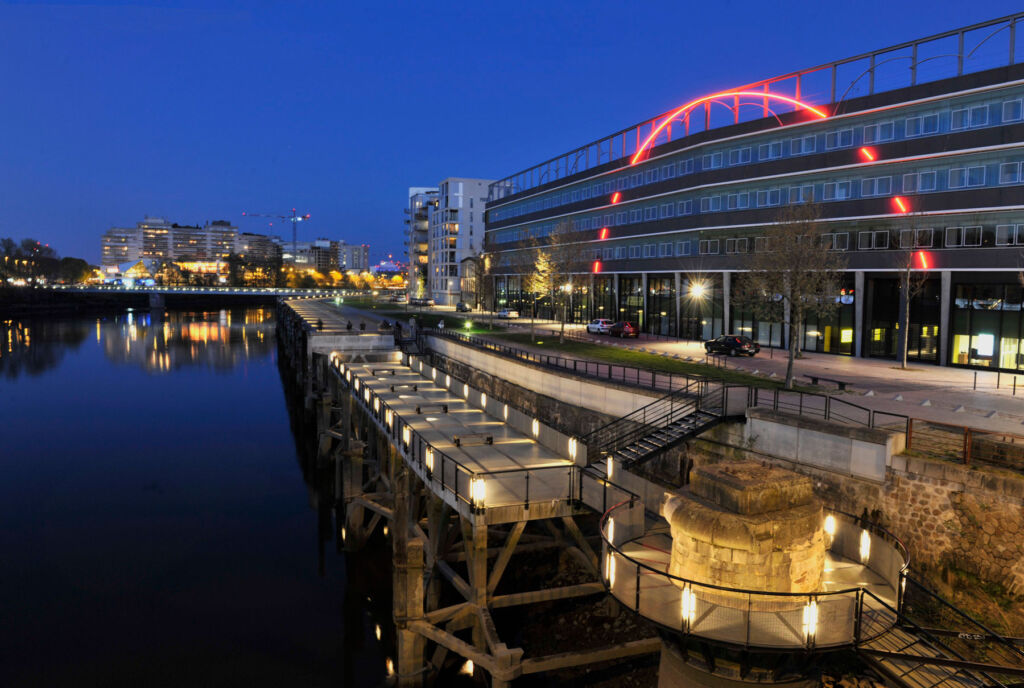 François Morellet, De temps en temps, Île de Nantes (bâtiment Harmonie Atlantique), création pérenne Estuaire 2010 © Gino Maccarinelli.
François Morellet, De temps en temps, Île de Nantes (bâtiment Harmonie Atlantique), création pérenne Estuaire 2010 © Gino Maccarinelli.
The world is brimming with underrated travel destinations that eagerly await exploration. So, if you’re looking to take a step towards that journey, the green line is not a bad place to begin with.
Nantes – Where and how?
The next Le Voyage à Nantes summer event falls between July 6th and September 8th 2024. For more information on the event and Nantes, visit www.levoyageanantes.fr.
Read more art features and news in our dedicated section here.
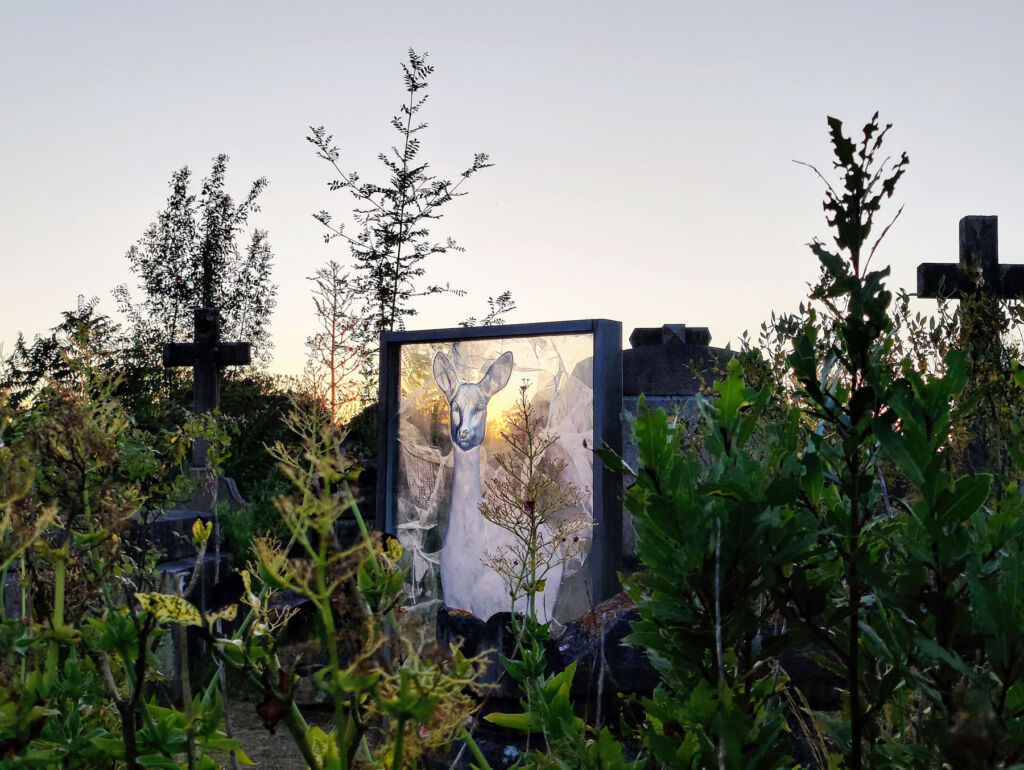 Miroirs des temps, Pascal Convert, Maître verrier Olivier Juteau, Cimetière de la Miséricorde, Le Voyage à Nantes 2022 © Matoo Watoo.
Miroirs des temps, Pascal Convert, Maître verrier Olivier Juteau, Cimetière de la Miséricorde, Le Voyage à Nantes 2022 © Matoo Watoo.
![]()




You must be logged in to post a comment.